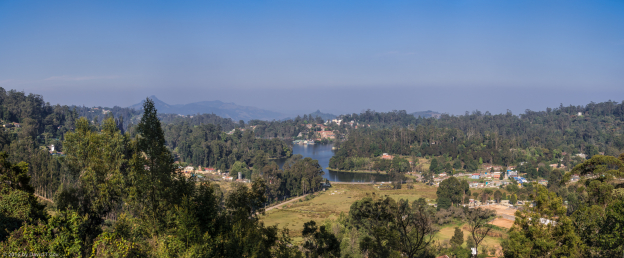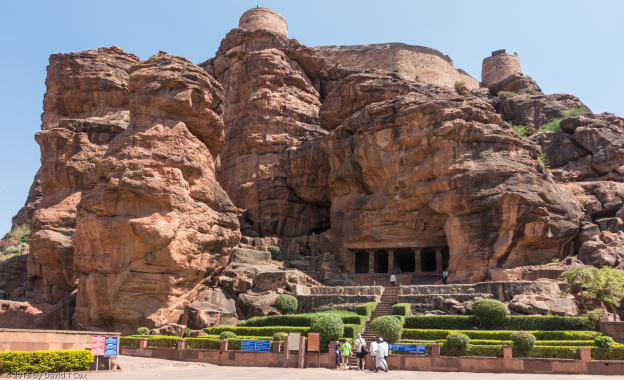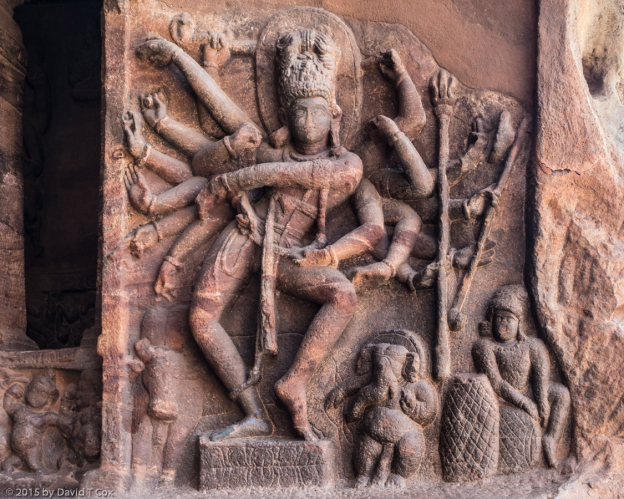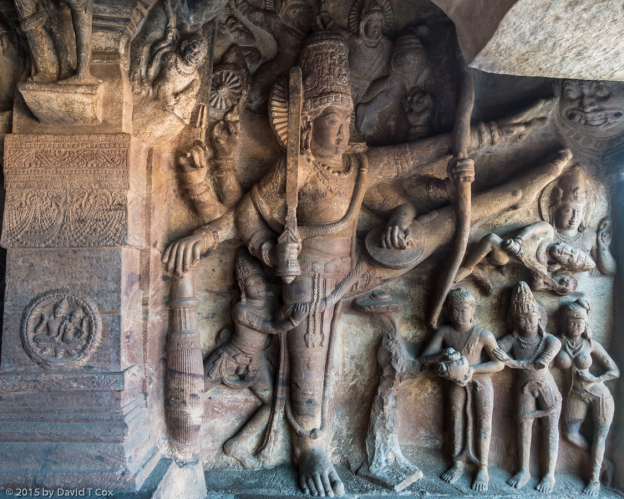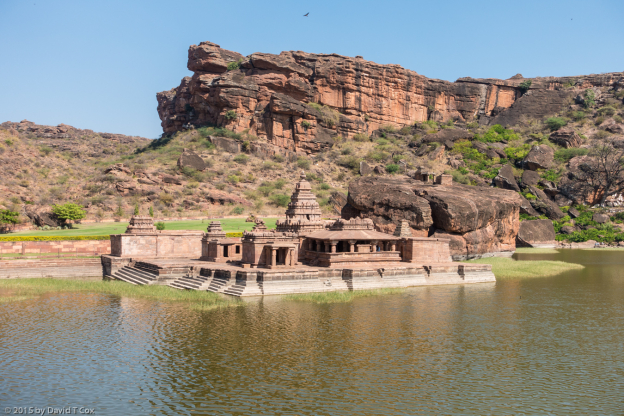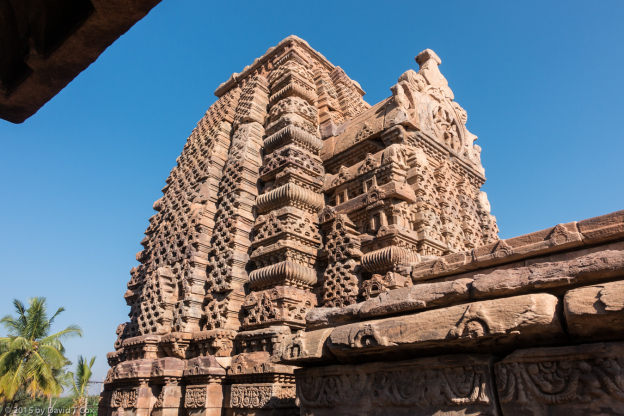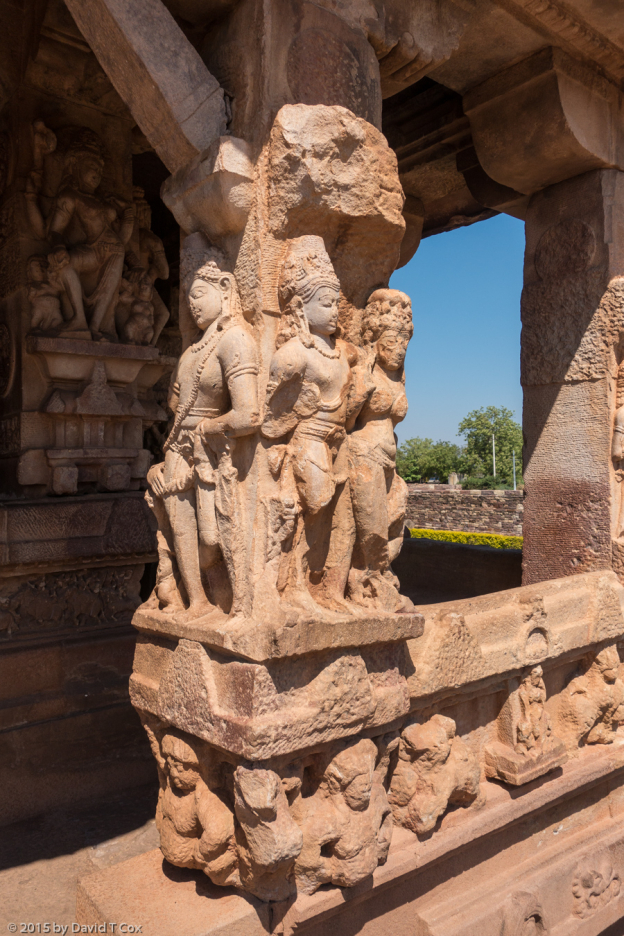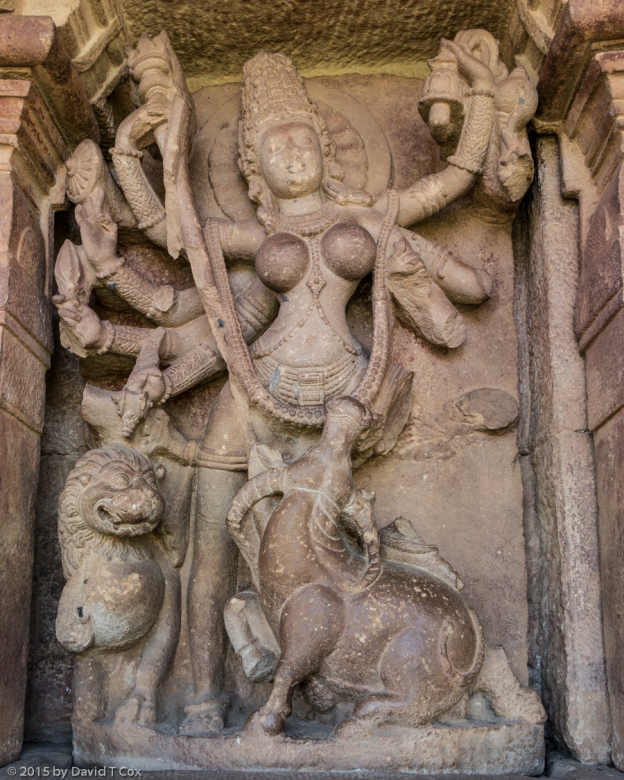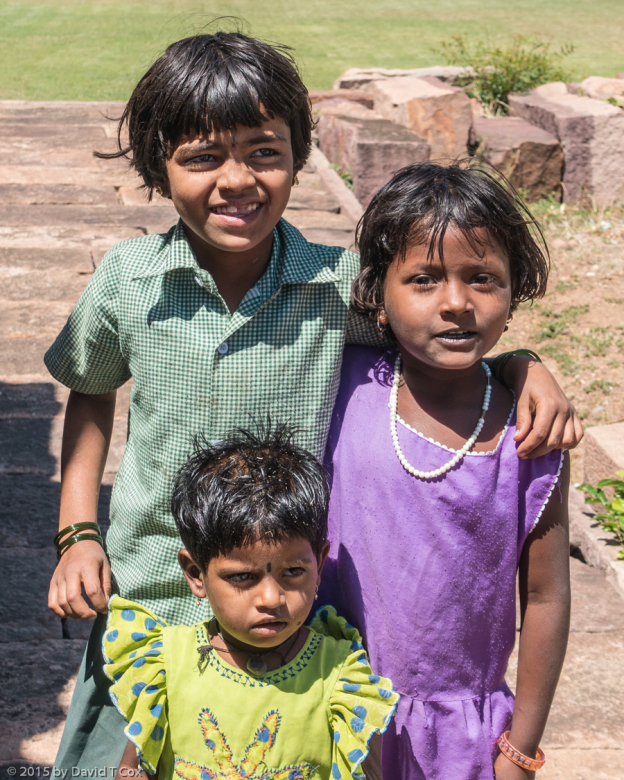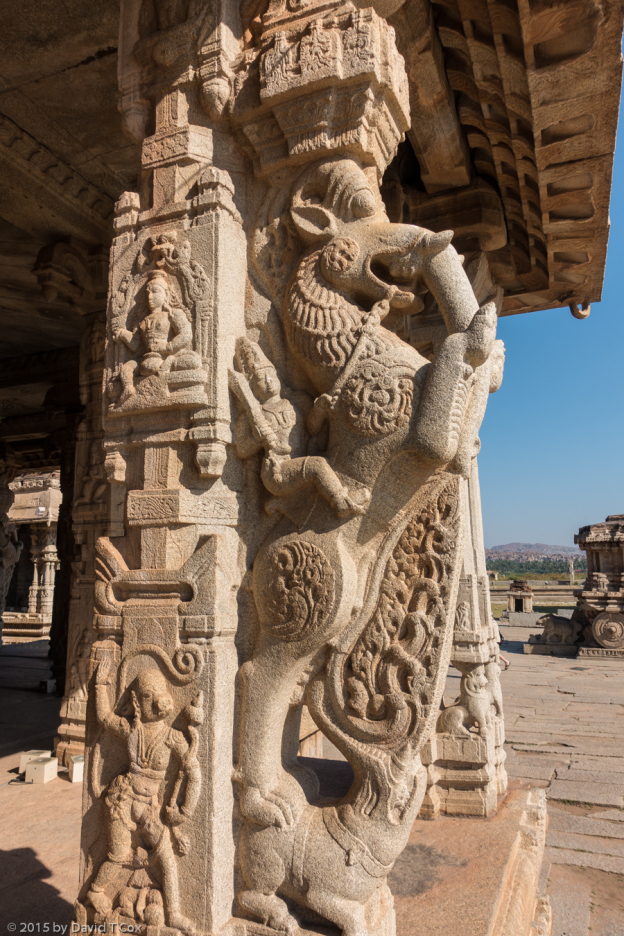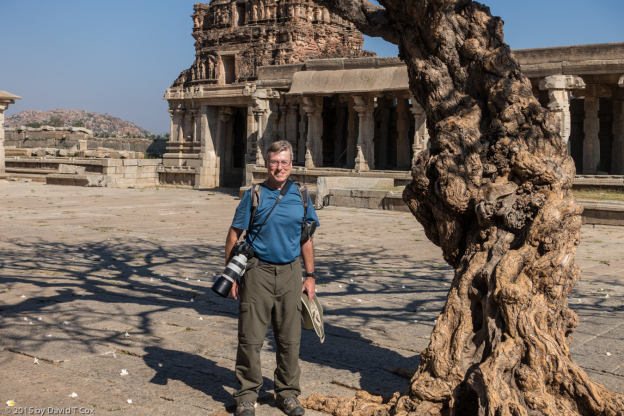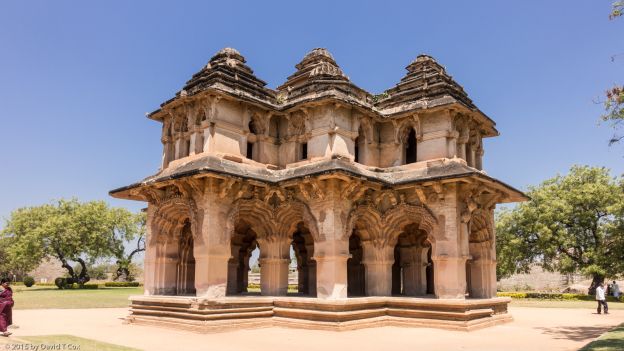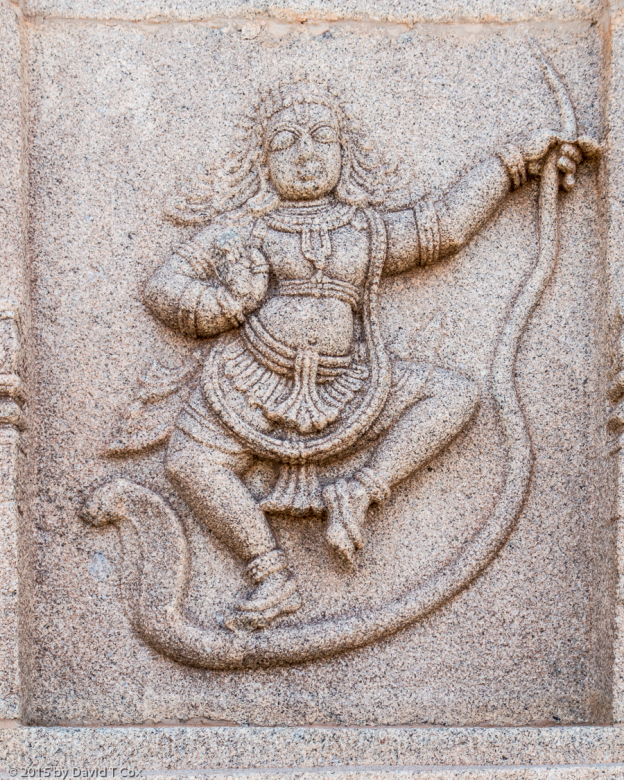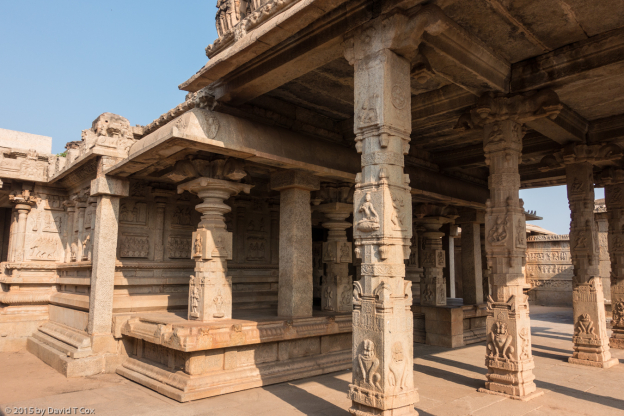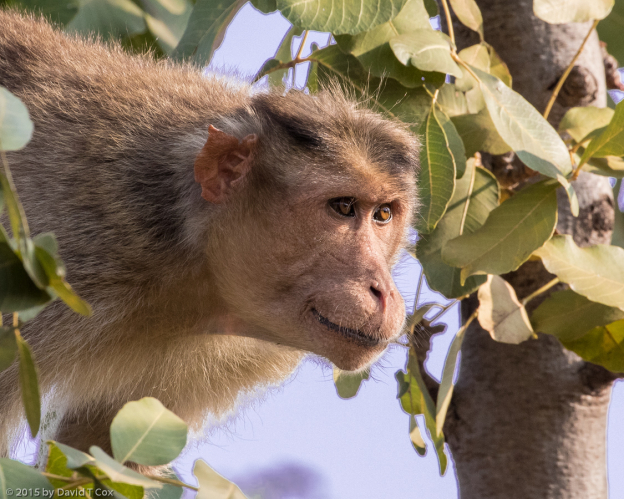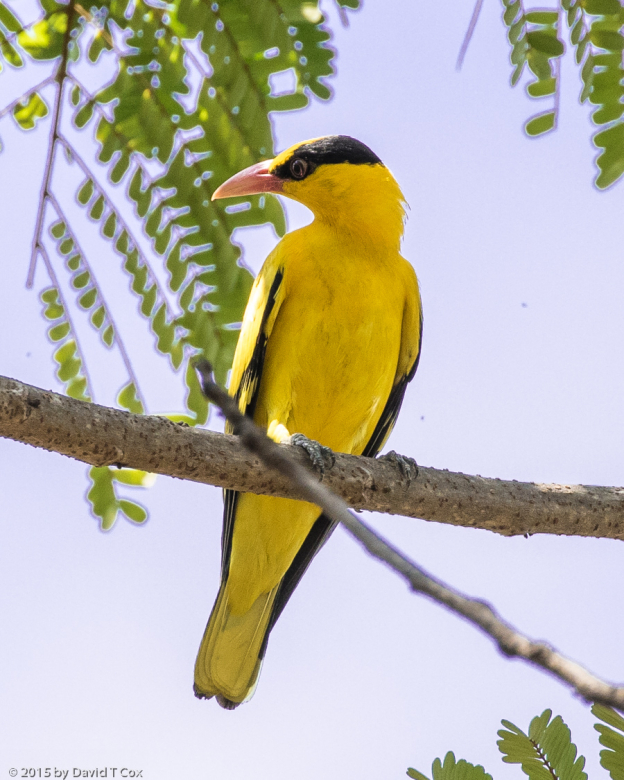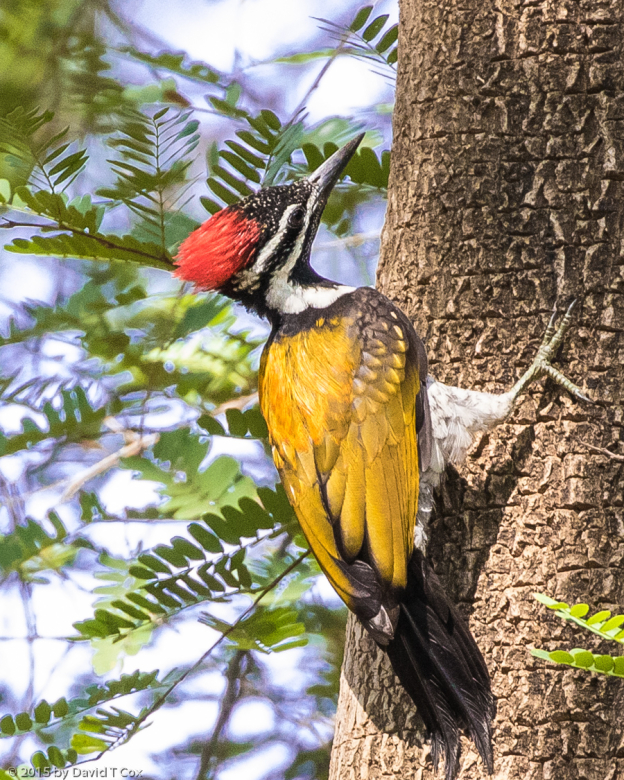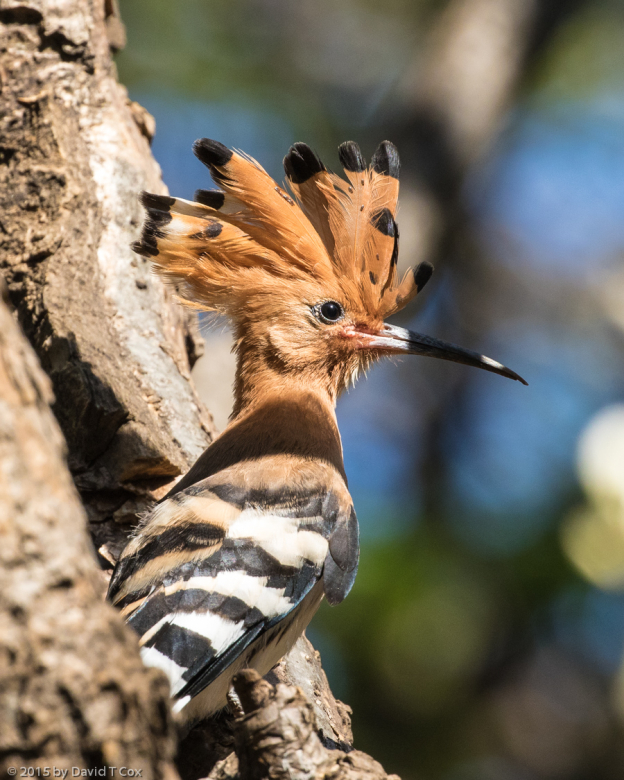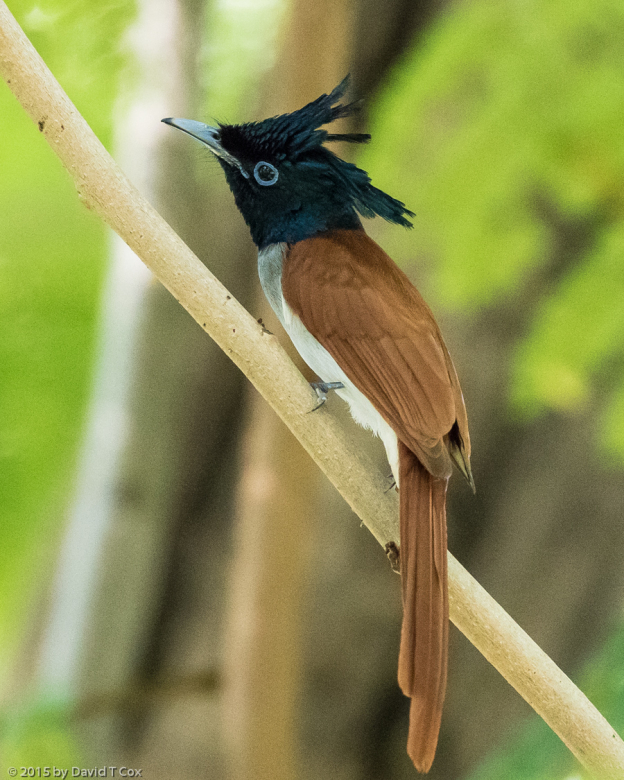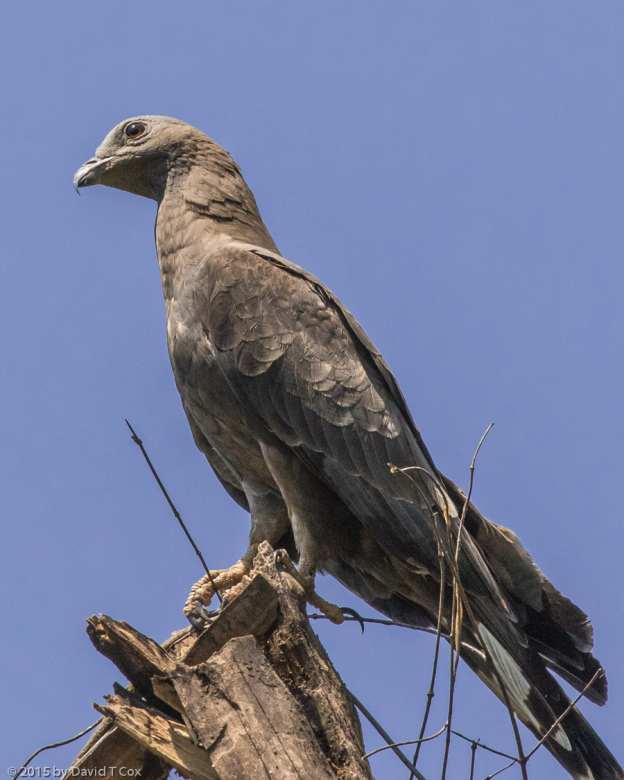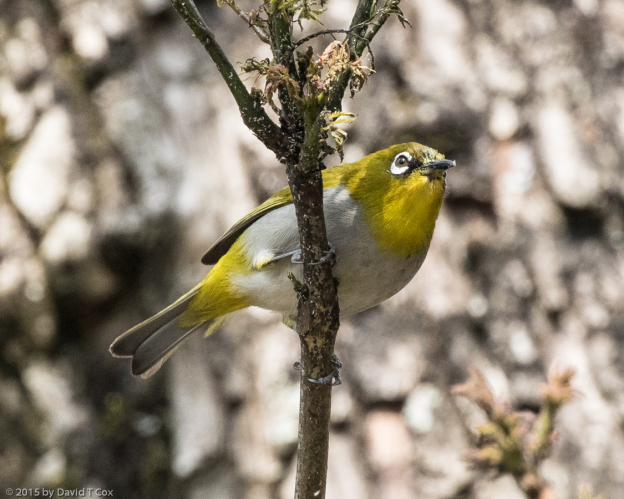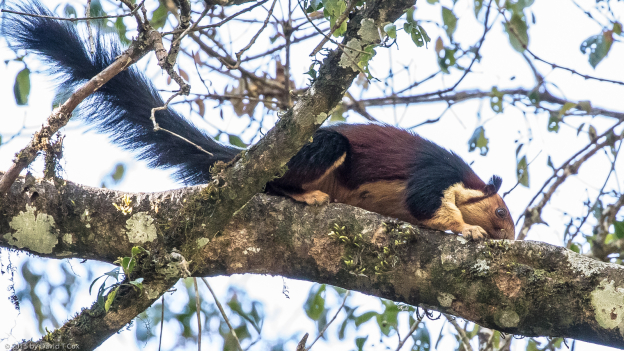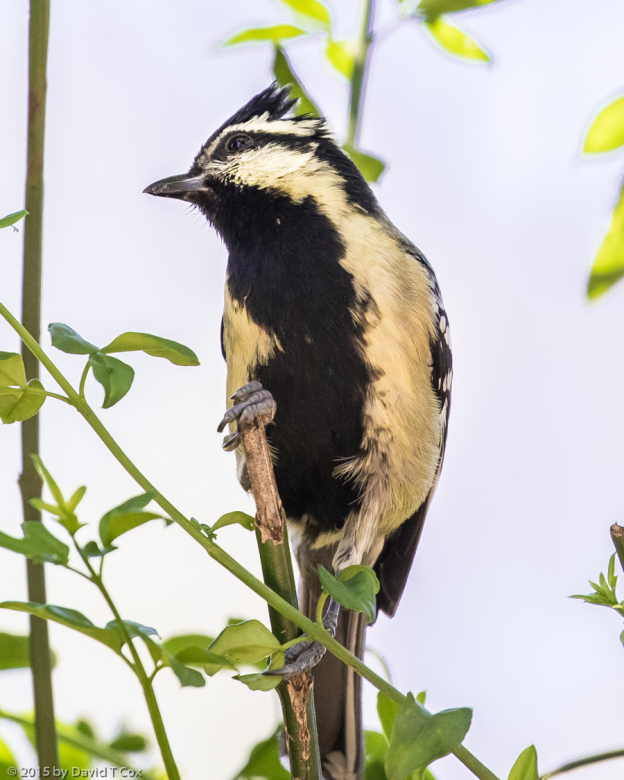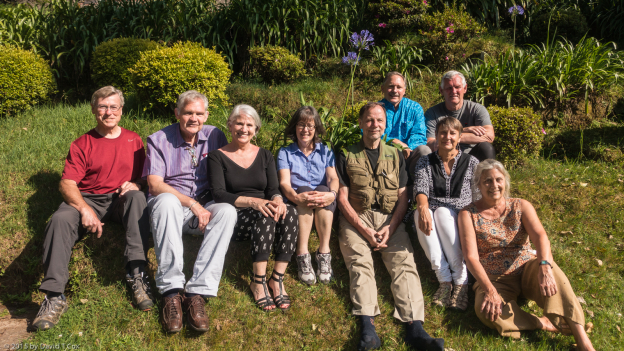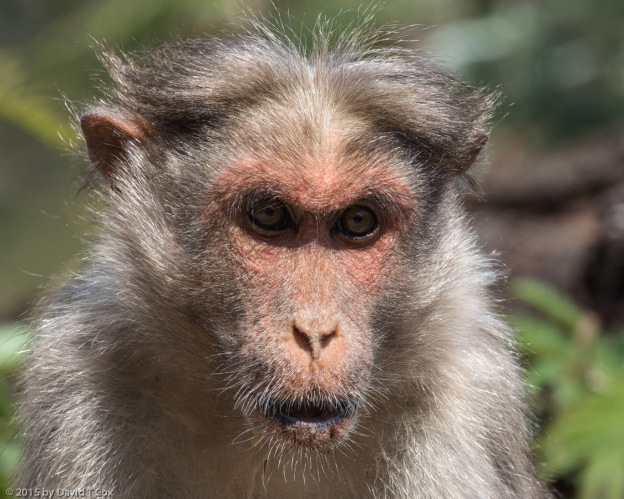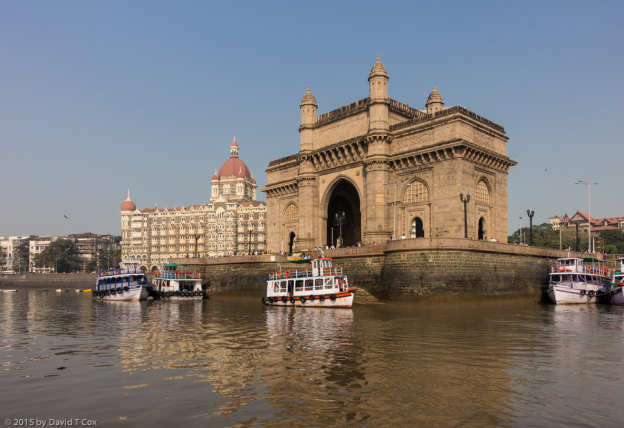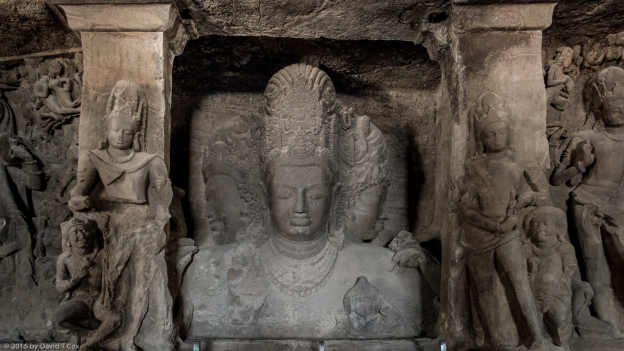All Photos Are Below the Travelogue Text
Click on Any Photo To Open Slide Show
To print the travelogue, right click anywhere on the page. Choose "Print" from your browser dialog box. You can choose Save to PDF in the browser print window.
Share your thoughts.
Email Dave - coxdavid55@hotmail.com
I last reported on Goa, from where we drove over the Western Ghats to Badami, Pattadakal and Aihole, where for two days we visited the archaeological remains of the great Hindu Chalukyan Empire which controlled much of south-central India from the 6th through the 8th centuries. Badami served as the capital from 543-757 AD. Four of the earliest Badami temples are monolithic carvings into stone cliffs in a style patterned after the Ellora Caves; these have some magnificent 3-D relief panel carvings of heroic sized Hindu deities. Of particular note is the 16 armed “dancing Lord Shiva” with images of Nandi the bull and Lord Ganesh the elephant headed deity below. Scattered around a lake just below the caves, and on nearby mountaintops, are a large number of temples constructed from finely cut and fitted stones, using no mortar, in a manner reminiscent of the ancient Hittites and more recent Incas. At nearby Pattadakal, a UNESCO World Heritage Site, the Chalukyan temples all are constructed in a single large courtyard, believed to have been used just for coronation rites of the various kings. The most unusual, slightly oval, late 7th century Durga Temple, as well as a couple of others, appear to have “sealed” their entirely stone roofs by placing stone “half logs” (as if one cut a log in half lengthwise) on top of all stone seams. Aihole, further to the east, was the largest Chalukyan center, operating well into the 12th century (the later period being denominated “Rashtrakuta”), and contains over 120 temples and structures spread over a very large area. I had never properly seen these southern style temple structures before this trip, and realized now the contribution this architectural style apparently made to the Angkorian Empire construction in the 9th-14th centuries in Cambodia.
From Badami we traveled south to Hospet to visit the World Heritage Site of Hampi, an ancient ghost town now. We spent two days covering the more important of the hundreds of temples, pillared halls and palaces of the capital city of the Vijayanagar Empire, which founded this capital in 1343, where it remained until destroyed by Muslim forces in 1565. The city at its height was the trading capital of the Indian Deccan, trading horses, spices, jewels and silk. The kilometer-long approaches to the major temples are stone paved “roadways” a hundred feet wide, lined on both sides with double storied pillared shopping stalls which created the gigantic markets for the traders. The buildings are spread over many square miles, most constructed of finely cut sandstone, with intricate pillars and carvings. Many of the pillared temples and long hallways are reminiscent of classic Greek architecture. Here also, especially on the massive Vitthala Temple, are the pillars with fantastic carved rearing horse and dragon creatures, each ridden by a small deity figure, most closely reminiscent of carousel animals with their riders. The high fortified city and palace stone walls, where still standing, display the incredible mortar-less stone work where each stone is custom fitted to the exact shape of the surrounding stones – so that most are only roughly rectangular, having often 5 to 10 edges to precisely fit their neighbors. Again, this is most reminiscent of the ancient Hittite and much later contemporary Inca construction.
From Hampi we traveled south, flying to Madurai, where we met a number of members of our 1967 high school class from boarding school days in India. Our hotel, the Gateway Resort was located on top of a heavily wooded hill overlooking the town; at least 15 fairly exotic species of birds resided on the forested grounds and provided good photography targets. We visited the outer perimeter of the famous Meenakshi Hindu Temple, but were hugely disappointed at the extreme police barricades completely encircling the square block, with police watch-towers at each corner and no photography permitted inside. The “blessing” elephant came around the side street to intercept us, rubbing its snotty trunk on our heads and shirts looking for money which it grabbed in exchange for issuing a “blessing” on us.
From Madurai we traveled to Kodaikanal, the old British hill station where we went to boarding school from the mid-1950s through 1967. Mostly we all just spent the entire time at different old Kodai classmate’s houses for teas and dinners (a number of ex-Kodai School alumni now live part time in Kodai, many of them artists or teaching part-time at the school). Kodai School at the time we all attended in the 1950s and 1960s was a small school teaching grades 1 through 12, with generally no more than 300 total students, all of whom lived in various boarding houses for 9 months of each year. This made us much more like family than classmates, and even after 50 years we find we have solid bonds and incredible mutual memories.
Kodaikanal town itself lies at about 7,700 feet, at the side of a picturesque lake, and is surrounded by hilltops and dense sholas – heavily rain-forested areas filling the watersheds, which forests are comprised of around 70 species of trees. This dense and wet environment provides a most beautiful countryside, with multiple damned lakes, and is filled with a huge number of wildlife and bird species. The gaur, the world’s largest buffalo (and dangerous), now wander down shola roads around the Kodai Lake. I had time for a couple of short hikes, both led by ex-boarding house mate Bruce Peck; the first just through Bombay Shola where we were rewarded with 20 minutes of entertainment by a pair of rare Malabar Giant Squirrels, and the second down to the top of Pembar Falls where we saw both a giant flying squirrel and a very endangered Nilgiri Wood Pigeon.
From Kodai, my travel partners Ken, Anna and I traveled down the back Ghat road to Coimbatore, from where we flew to Bombay. We have spent the last two days visiting sites Ken and I remember from the days we lived in India. Of particular interest was our half-day boat trip across the harbor to Elephanta Island, another UNESCO World Heritage Site with several 6th century,Ellora style, monolithic rock cave temples; the Cave 1 contains the famous and huge (20 feet high) 3-face image of Shiva known as Trimurti. The 1 hour boat ride to the island still leaves from the Gateway to India, built in 1924 to honor the visit of King George V in 1911. We also visited the famous Victoria Terminus, the main train station in Bombay, built with the classic British architectural style of India in 1887. Ken and I wandered for a while through the narrow passageways of Crawford Market where our parents once a year, 5 to 6 decades ago, would come to shop for tinned and packaged specialty goods imported from England and the USA. We had lunch on consecutive days at Gaylords Restaurant, where I have fond memories, over 5 decades old, of pickled onions and hard-crusted rolls with creamery butter (neither now available – the restaurant has gone from old British to Indian food), and Khyber Restaurant, perhaps the fanciest Indian restaurant in town, where Ken’s accompaniments of a bowl of white rice and plastic bottle of water alone cost 560 Rupees ($9.00 US). This morning I walked to the Red Shield House, a hostal/hotel operated by the Salvation Army since the early 1900s. When in Bombay in the 50s and 60s my family used to stay there in a double room with private bath, now still available with added AC for $24, inclusive of breakfast. The backpacker dorms cost $5.50, inclusive of breakfast. Directly cattycorner stands the majestic Taj Mahal Palace Hotel, which was the major target in the 2008 Bombay terror attacks, and where rooms start at over $600. Quite a contrast in lodging, which has existed unchanged for close to 100 years.
My India time is up, and I head to the airport this evening for the very long flight back to the United States. Later. Dave
- Cave 1, Badami, Hindu Siva temple, 6th C, Karnataka, India
- Cave 1, 16 armed dancing Shiva, Badami, Hindu Siva temple, ca. 550 AD, Karnataka, India
- Cave 3, 8 armed Lord Vishnu, Badami, Hindu temple, 6th C, Karnataka, India
- Bhutanatha Temple Group, Chalukyan, 7th C w outer hall 11th C, Badami, Karnataka, India
- Mallikarjuna Temple, Chalukyan 733-746 AD, Pattadakal, Karnataka, India
- Papanatha Temple, Chalukyan 8th C, Pattadakal, Karnataka, India
- Durga Temple, Chalukyan 7th-8th C, Aihole, Karnataka, India
- Durga Temple, Chalukyan 7th-8th C, Aihole, Karnataka, India
- girls at Ambigera Gudi Complex, Chalukyan 10th C, Aihole, Karnataka, India
- Vitthala Temple, Hampi 15th-16th C, Karnataka, India
- photographer at Vitthala Temple, Hampi 15th-16th C, Karnataka, India
- Lotus Mahal, Hampi 14th-16th C, Karnataka, India
- Hazararama Temple, Hampi 14th-16th C, Karnataka, India
- Hazararama Temple, Hampi 14th-16th C, Karnataka, India
- Bonnet Macaque, Hospet-Bangalore road, Karnataka, India
- Common Hawk Cuckoo juv., Gateway Resort, Madurai, Tamil Nadu, India
- Black-naped Oriole, Gateway Resort, Madurai, Tamil Nadu, India
- Lesser Goldenback, Gateway Resort, Madurai, Tamil Nadu, India
- Hoopoo, Gateway Resort, Madurai, Tamil Nadu, India
- Asian Paradise Flycatcher female, Gateway Resort, Madurai, Tamil Nadu, India
- Pallid Harrier or Lesser Fish Eagle?, Kodai Ghat alternate road, TN, India
- Oriental Whiteeye, Kodai Villa Retreat, TN, India
- Kodai from Upper Lake Road, Kodai, TN, India
- Malabar Giant Squirrel, Bear Shola, Kodai, TN, India
- Indian Yellow Tit, Kodai, TN, India
- 1967 Class members: Dave Cox, Phil Turner, Laura Servid, Margaret Graham, Tim Heineman, David Bosch, Loey Knapp, Ken Pease, Sara Simons, at Loey’s house at Shelton, Kodai, TN, India
- Bonnet Macaque, Berijam Road, Kodai, TN, India
- Gateway to India & Taj Hotel, from Elephanta boat, Bombay, India
- Three-faced Shiva “Trimurti”, Elephanta Cave 1, 6th-7th C, Bombay, India
- Victoria Terminal, 1887, Bombay, India
To print the travelogue, right click anywhere on the page. Choose "Print" from your browser dialog box. You can choose Save to PDF in the browser print window.
Share your thoughts.
Email Dave - coxdavid55@hotmail.com
